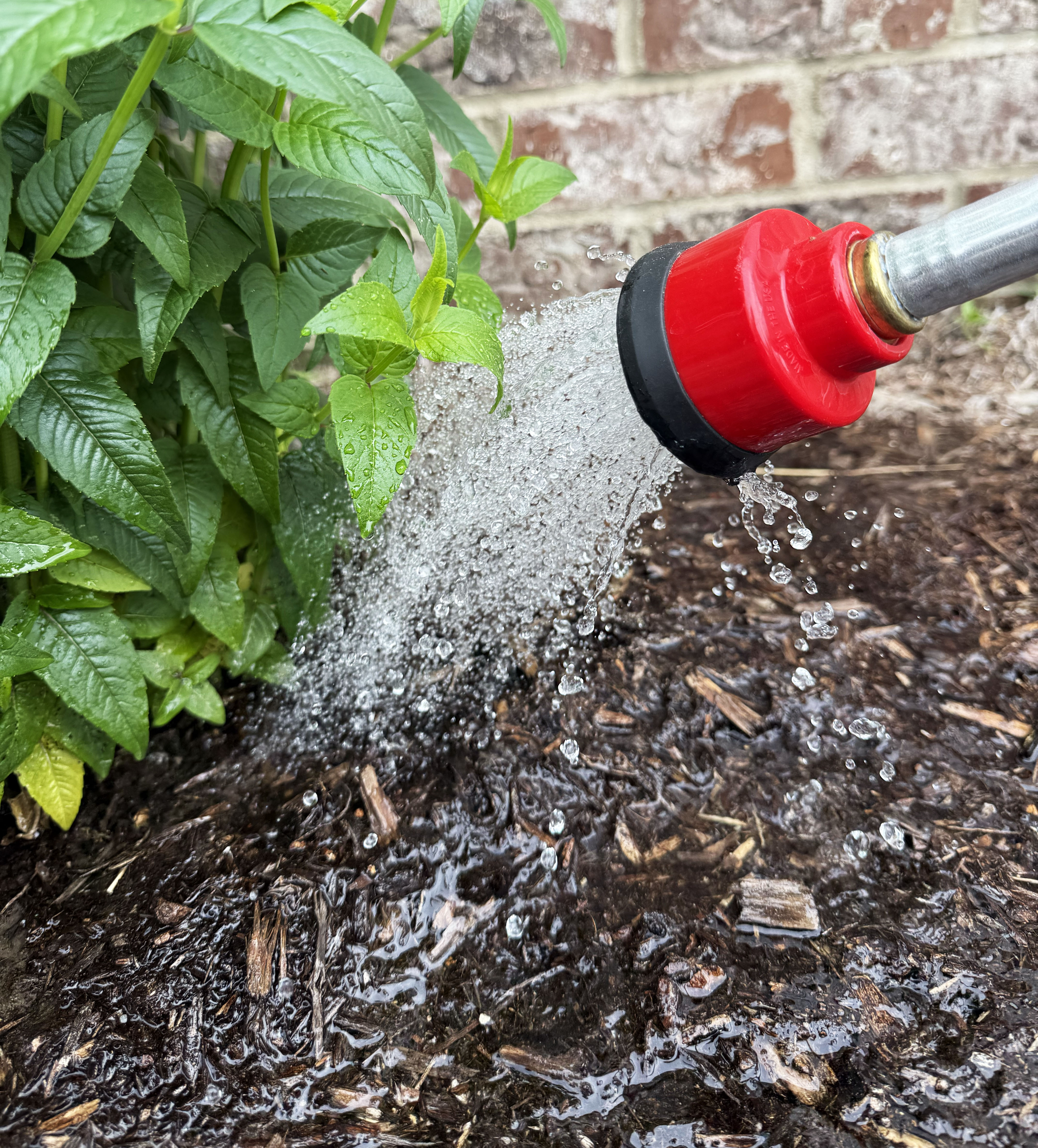Tips for Watering Your Lawn and Garden
go.ncsu.edu/readext?1072733
en Español / em Português
El inglés es el idioma de control de esta página. En la medida en que haya algún conflicto entre la traducción al inglés y la traducción, el inglés prevalece.
Al hacer clic en el enlace de traducción se activa un servicio de traducción gratuito para convertir la página al español. Al igual que con cualquier traducción por Internet, la conversión no es sensible al contexto y puede que no traduzca el texto en su significado original. NC State Extension no garantiza la exactitud del texto traducido. Por favor, tenga en cuenta que algunas aplicaciones y/o servicios pueden no funcionar como se espera cuando se traducen.
Português
Inglês é o idioma de controle desta página. Na medida que haja algum conflito entre o texto original em Inglês e a tradução, o Inglês prevalece.
Ao clicar no link de tradução, um serviço gratuito de tradução será ativado para converter a página para o Português. Como em qualquer tradução pela internet, a conversão não é sensivel ao contexto e pode não ocorrer a tradução para o significado orginal. O serviço de Extensão da Carolina do Norte (NC State Extension) não garante a exatidão do texto traduzido. Por favor, observe que algumas funções ou serviços podem não funcionar como esperado após a tradução.
English
English is the controlling language of this page. To the extent there is any conflict between the English text and the translation, English controls.
Clicking on the translation link activates a free translation service to convert the page to Spanish. As with any Internet translation, the conversion is not context-sensitive and may not translate the text to its original meaning. NC State Extension does not guarantee the accuracy of the translated text. Please note that some applications and/or services may not function as expected when translated.
Collapse ▲Water is our most important natural resource and with hot summer months that bring dry conditions, it’s more important than ever to practice water conservation. Fortunately, there are simple, effective strategies you can use in your garden to reduce water waste while helping your plants thrive.
Start with smart soil preparation. Good water conservation begins before you even put plants in the ground. When creating a planting area, organic matter such as compost can be incorporated. This improves the soil’s ability to retain moisture, especially in sandy soils. Once planting is complete, apply mulch around your plants. This could be pine bark mulch, pine straw, or even leaves from the previous fall. Mulch reduces water loss from evaporation and helps prevent weed growth. Not only do weeds detract from your garden’s appearance, they compete with other plants for water and nutrients. The mulch and organic matter will break down over time so it will need to be replenished as needed.
Choose efficient watering methods. Opt for soaker hoses, drip irrigation, or micro
sprinklers instead of overhead watering. Overhead watering often results in water loss due to evaporation. In contrast, drip irrigation systems deliver water directly to the soil, targeting your plants and avoiding waste on sidewalks or driveways. These methods also allow water to be applied slowly, giving it time to soak into the soil and reducing runoff. If hand watering, direct water to the base of the plant rather than over the leaves. This ensures more water reaches the roots and helps prevent fungal diseases caused by wet foliage. Water early in the morning when temperatures are cooler and evaporation is minimal.
Water according to need, not schedule. Avoid watering on a fixed schedule. Instead,
pay attention to your plants and the weather. In hot, dry conditions your garden may need more frequent watering, but during cool or humid periods, less water may be required. If there was a recent rain event of a half inch or more, it may be possible to add a couple of days until the next irrigation.
Keep in mind that different plants have different needs. Established trees and shrubs can often go without supplemental watering unless there is a drought. On the other hand, vegetables, annuals, and container plants require more frequent attention. Containers can dry out quickly and may need watering more than once on hot days. You can group plants with similar watering needs to make watering more efficient. This will both save water as well as save time. Watering deeply and less frequently encourages deep root growth, helping plants become more drought-resistant over time.
Use tools to help manage water. Consider using a timer to avoid overwatering. Whether it’s a simple phone alarm or a spigot timer, this small tool can prevent water waste while giving you peace of mind.
Collect Rainwater. Rain barrels are another great conservation tool. Just on inch of rain on a 1,000 square-foot roof can yield over 500 gallons of water which is perfect for reusing in your garden and reducing your water bill.
Choose drought tolerant plants. Whenever possible, incorporate drought tolerant plants into your landscape. These plants require less frequent watering and are well-suited to withstand dry conditions.
By using these water-wise gardening practices, you can conserve water and support a healthy, thriving garden even during the hottest months. For more information about water conservation in your garden or for any other gardening related information contact Kinsey Watkins at the Richmond Cooperative Extension Office at (910) 997-8255 or kinsey_watkins@ncsu.edu. Follow us on Facebook and check out our Events page stay updated on workshops being offered.




